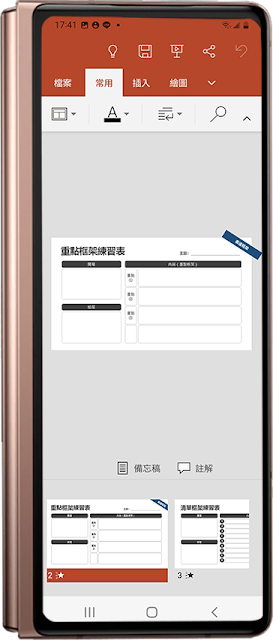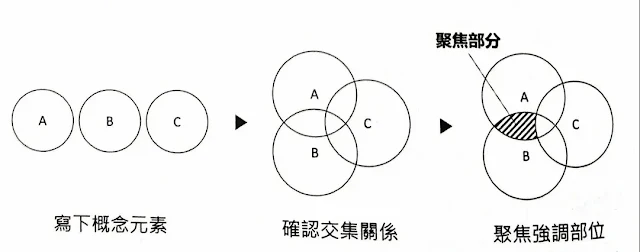.png)
2025 Osaka Expo Simplified: One App for All the Latest Info, Maps, and Transport!

.png)
At work, the supervisor suddenly asks you to write a report, how much time do you need to spend? You spend a day making a report, but you are dismissed as illogical and unfocused, while your colleague only spends 3 hours making a report and is appreciated by your supervisor. What is wrong?
The book I want to share today: The book "High-yield Ability"
can be used in work. The book uses 8 expression frameworks and 4 diagrammatic frameworks, so that you can write articles or give presentations at one time. Output becomes your advantage.
If you are often bothered by not being able to convey your ideas clearly to others, or are often told that you are illogical when giving presentations, then this book is for you.
The author Liu Yiyou is a knowledge-based self-employed person who is good at logical thinking, data analysis, strategic planning, information visualization and business presentations. A large amount of information, the ability to quickly output various charts and presentations, and be good at presenting knowledge at a glance with a single chart.
In order to allow readers to practice and imitate easily, the author generously discloses his knowledge output method - the advantage output "PROS" model , which can be downloaded and used for practice as long as you scan the QR code.

To download the format sheet, you will need to scan through the QR code APP:
▲I scanned with this APP.
If you are an ios user, you can turn on the built-in camera scan.
1. Open the QR code APP on your mobile phone and scan the QR code
2. Open the webpage after decoding is complete

3. Download the Format Sheet Exercise
The author divides this model into four steps: positioning, reorganization, output, and scenario .
1. Orientation:
Clarify the purpose and object of the output, and choose the appropriate framework.
2. Restructure:
Organize logical, concise presentations according to a framework.
3. Output content:
Transform the expression content into a fully structured output content.
4. Scenario application:
Apply the output content to a variety of different scenarios.
Example 1: Compare output to cooking
1. Orientation : determine the menu
2. Reorganize the structure: find the corresponding ingredients for cooking
3. Output content: set the plate
4. Scenario application: Meal forms, such as bento, cakes, set menus, etc.
1. Orientation:
what should be done to get the desired response from readers? What structure is suitable for the content?
2. Restructuring the structure :
According to the materials needed in the selected key framework, summarize the views and collect relevant materials.
3. Output content :
opening, content, ending
Opening → In order to make people want to watch
Content → logical and clear
epilogue → feel rewarding
4. Scenario application:
tell others what the book is talking about by verbal explanation, or make a picture and put it on the Internet to attract people's attention.
There are no shortcuts to high productivity, but no detours
Yukihiro Yoshida , a Japanese talent development consultant , once said:
"The reason why work can't be done, in addition to being incapable of doing things, most of them come from the mentality of seeking good things."
The author shared that his first job was a statistical engineer, responsible for abnormal diagnosis and manufacturing yield improvement. Just like most engineers, it is normal to work overtime and stay up late every day, just to complete the tasks assigned by the company. Work hard but don't know how to solve problems at work, and never keep up with the pace of supervisors and colleagues.
If you don’t know how to stop in moderation, you will only end up exhausting yourself physically and mentally, reducing your work effectiveness, and your speed will become slower and slower, and you will fall into a vicious circle.
What do you think should be the relationship between the value and time of the output?
Work smart, not work hard!
Think about what the person you want to report is most concerned about? With the advancement of a work task, the point of the other person's attention will also change. You have to find out what he cares about the most? That's the most valuable part!
Doing the important things first, producing output from time to time, and making returns on a regular basis will make people feel that you are a highly efficient person; spend the same effort, but give people a very different impression, and find content that does not meet the supervisor's expectations, adjustments can be made in time .
The secret to high productivity
"Beyond the other party's expectations, you don't have to do a lot, but you must meet what the other party wants, and go beyond it a little bit; as for what he doesn't care about, it's useless for you to do more."
Jobs famously said: "You can't connect the dots in advance, only in the future will you understand how the dots are connected".
 (Picture / taken from Apple's official website)
(Picture / taken from Apple's official website)
If you have the ability to produce, you can realize the value
As long as you find the right direction and use the right method, you can achieve success in output. The author observed that people who have achieved great achievements around them and in the society may not all have outstanding talents or smart brains, but they all have one thing in common: they know how to produce output, and it is a large and fast output.
The output is to solve problems in life and work. It is an integrated output, not a creative output. For example, when you report on work with your supervisor, how to say the key points concisely? How to integrate the information at a glance?
The key is to "get to the point before the other person gets distracted"
In
simple terms, output is the ability to speak, write, and act.
Think of the brain as a system:
"input, processing, output and feedback"
The key to growth is not the amount of input, but the method and quality of output.
Many people always think that they are not ready, so they cannot do the output well. Most efficient output people know how to output first to feedback better input, and then use the right input to produce better output .
The well-known god of learning, the Feynman learning method mentioned by Scott Young in "Overspeed Learning" is currently recognized as an efficient learning method. This process includes four steps of selection, discovery, learning and simplification:
1. Select (output):
Find out what you want to learn and write down everything you know about the subject.
2. Finding (feedback):
Discovery feedback finds points of incomprehension and stuck in the process.
3. Learn (input):
Start typing and learn from any resource.
4. Simplify (output):
Simplify all the processes into images, and add your own examples.
8 Expression Frames
1. Key Framework
Grasp three principles: digital forecast, the rule of three, and a beginning and an end.
One of the most widely used frameworks. At the beginning, I will explain a few key points (try not to exceed 3), which makes people feel very concise, condensed, and easy to remember. Finally, summarize what you said in one sentence, which makes people feel Understand your opinion or point of view.
2. Checklist Framework
The list framework is the most flexible framework. For a topic, the collected materials or ideas are organized into a list, so that we can make simplified or expanded adjustments at any time, without worrying about whether the output content is not complete.
The key frame emphasizes "focusing", and the list frame focuses on "listing" the
list items within10.If there are more than10items, the classification is used as a hierarchical division.
3. Time frame
Time frames can be used to reflect the sequence in which content occurs or should occur. According to the degree of time overlap, time frames can be divided into three types.
1. Period frame:
used for trend change, segment description (ex: past, present, future )
2. Stage frame:
used for strategic planning, time schedule layout (ex: short-term, medium-term, long-term )
3. Step framework:
used in process plan, step description (ex: step 1, step 2, step 3)
period frame
The past development history and breakthroughs of artificial intelligence
The current development status and bottlenecks of artificial intelligence
Future development possibilities and applications of artificial intelligence
stage frame
Short-term goals: organize the study, purchase ingredients
Mid-term goals: lose weight, write books, and get certified
Long-term goal: set up a personal studio
step frame
Step 1: Decide what to do today
Step 2: Collect data about the action
Step 3: Organize and archive the data obtained in one day
4. Space frame
Scale from large to small, distance from far to near, you can create macro to micro feelings.
The best way to attract the attention of the other party is to keep throwing hooks, so that the other party feels that it is related to him and beneficial to him. Therefore, it is presumed that the content at the back should be more relevant to him.
As the world's top consulting firm, McKinsey is good at using a persuasive general analysis framework to integrate the current situation and insights of industries or enterprises, and published a research report on "The Impact of New Coronary Pneumonia on Businesses", which is in line with the spatial framework. order
1. The impact of the development of the epidemic on the global economy
2. The challenge of the development of the epidemic on the global supply chain
3. The impact and impact of the development of the epidemic on the industry
4. The impact of the development of the epidemic on the consumption of enterprises
5. Thematic framework
All successful leaders or brands in the world follow the golden circle in the way they think, act and communicate, starting from the core idea and goal, that is, the purpose (why) ; The process, which is the approach (How) ; the final product and leadership style presented, which is the result (what)
Example: Apple conference
(Picture / taken from Apple's official website)
Purpose (why):
Apple's brand philosophy is innovative thinking, hoping to bring consumers an excellent user experience.
Practice (How):
To achieve the goal, it is necessary to design a simple and exquisite product appearance and a user-friendly user interface.
Result(what):
Apple's products are built based on this approach.
6. Issue framework
The issue framework has four elements: argument, rationale, example, and restatement.
1. Argument:
State an argument, claim, or a suggestion in one sentence.
2. Reason:
The reason or basis to support the argument.
3. Example:
Actual cases that can be used to corroborate and explain the reasons.
4. Reiterate:
Reiterates an argument, claim, or suggestion made at the outset, and evokes action .
7. Problem Framework
An effective solution is to establish a connection with the other party before asking questions and solutions, so that they know what the problem is? How will this problem affect them?
When expounding a problem, you can use these four steps to express: situation, impact, topic, and countermeasures. Move the things you want to let the other party know first and talk about it first.
1. Situation:
What's the question? Explain the background and current situation of the problem.
2. Shock:
Who is affected by this problem? How?
3. Subject:
Specifically, what are the problems to be solved?
4. Countermeasures:
specific strategies for the subject? Include goals, programs, and expected benefits.
8. Project Framework
Showing the value of the results and the difficulty of meeting the standards, and following the subject framework, can reduce the occurrence of misunderstandings.
1. Background:
Briefly explain the background and current status of the mission
2. Task:
State the objective of the mission, what role do you play? Is it necessary to change the current goals?
3. Action:
Broken down into three or four key activities, which ones have been accomplished? What's next?
4. Outcomes:
What are the results and benefits that have been accomplished so far? What are the subsequent expected results and benefits?
4 Graphical Frames
In addition to the 8 expression frames, the book also mentions another key point: the graphic frame, when you can't express it clearly with words, try to present it with images !
When we use words and language to express, there will be differences in understanding because the other party has different experience backgrounds, experience cognition and values. Therefore, we use easy linear expressions to carry out various outputs, because this is the brain of most people. easy-to-understand way.
But not all information structures can be converted into a linear form. For example, the application process or market intelligence aggregation must be explained graphically through other structural forms, so you will need four graphical frameworks .
1. Use the tree diagram to "summarize" the viewpoint context of the content
2. Use the flow chart to "comb" the operation mechanism of the content
3. Interactive comparison of "positioning" content with a rectangular chart
4. Use Venn diagrams to "emphasize" the intersection of content
1. Dendrogram
The dendrogram is a hierarchical structure, which is expressed graphically. The purpose is to remove the clutter and save the essence, to establish associations with the key elements of the content, and to make the overall structure concrete and visible. Common dendrograms Patterns are organizational charts, mind maps, and fishbone diagrams .
So how to organize the information into a tree diagram? Through the following 3 steps:
1. Extraction information
Capture highlights or gather ideas from content.
2. Inductive classification
Sort by the association between elements.
3 Build the structure
Organized into a tree diagram with context
2. Flowchart
Flowchart is the most frequently used project management tool. Through different geometric patterns and arrow symbols, it can express the steps of problem solving, the operation mechanism of production line or the flow of tasks.
So how do you draw a flowchart? Through the following 3 steps:
1. Arrange objects
The objects are presented in the form of keywords and arranged in approximate positions.
2. Guide the line of sight
The arrow symbol is used to express the direction of the process operation and to guide the reading line of sight.
3. Emphasize layers
The layers of information are emphasized through different geometric patterns, sizes and shades of color.
3. Matrix diagram
Use the matrix diagram to overlook the whole picture, simplify complex things before thinking, in short, add some restrictions to let yourself directly enter the thinking mode of convergence and focus.
How to draw a matrix diagram? Through the following 3 steps:
1. Select the type of matrix diagram according to the purpose
2. Determine the horizontal and vertical axes
3. Fill in the information in the frame
4. Venn diagram
Venn diagrams are often used to show "rough" relationships of sets of concepts.
How to draw a Venn diagram? Through the following 3 steps:
1. Write down the conceptual elements that come to mind
2. Confirm the set relationship of these conceptual elements
3. Focus on the intersection you want to emphasize
Epilogue
I think the book "The Ability to Produce High Productivity" has brought me a lot of benefits and help. We often fall into a situation where we don't know how to focus or have no clue. This is because we can't immediately understand unfamiliar or complicated content. The relationship of digestion, and the book proposes 8 expression frameworks and 4 diagrammatic methods, teaching us to disassemble in different ways, output different answers, and help us avoid a lot of wrong paths.
After reading this book, I will continue to learn more from the author and turn the information in the book into my own knowledge. As long as I find the right method, anyone can produce efficiently. I recommend everyone to read this book.

To download the format sheet, you will need to scan through the QR code APP:
▲I scanned with this APP.
If you are an ios user, you can turn on the built-in camera scan.
You may be interested in:
Recommended Reading:
Video recommendation:
Come and solve classic sudoku puzzles, have fun and train your brain :
Go to download (click to open)

.png)


























.png)


Comments
Post a Comment